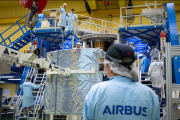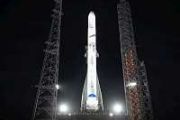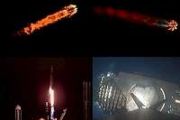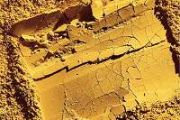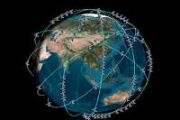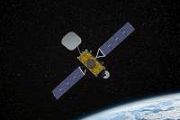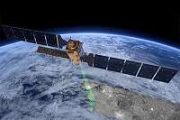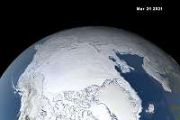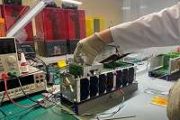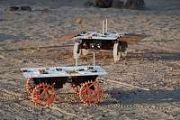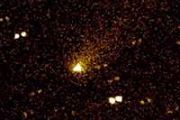
Copernical Team
Cubic Telecom and Skylo expand satellite connectivity for vehicles
 Cubic Telecom, a global leader in software-defined vehicle (SDV) solutions, has announced a partnership with Skylo Technologies, a pioneer in non-terrestrial network (NTN) communications. This collaboration will integrate Skylo's satellite network into Cubic's connectivity platform, expanding its capabilities to include satellite-based global coverage.
The partnership builds on Cubic Telec
Cubic Telecom, a global leader in software-defined vehicle (SDV) solutions, has announced a partnership with Skylo Technologies, a pioneer in non-terrestrial network (NTN) communications. This collaboration will integrate Skylo's satellite network into Cubic's connectivity platform, expanding its capabilities to include satellite-based global coverage.
The partnership builds on Cubic Telec Space Machines expands global partnerships with UK collaboration to address space debris
 Space Machines Company, a leading Australian-Indian in-space servicing firm, has announced a strategic collaboration with UK-based ISAM technology developer Lunasa. This partnership aims to tackle the pressing global challenge of space debris and represents a significant step forward under the UK-Australia Space Bridge Arrangement, which promotes innovation and international collaboration within
Space Machines Company, a leading Australian-Indian in-space servicing firm, has announced a strategic collaboration with UK-based ISAM technology developer Lunasa. This partnership aims to tackle the pressing global challenge of space debris and represents a significant step forward under the UK-Australia Space Bridge Arrangement, which promotes innovation and international collaboration within Muon Space secures contract to enhance space-based environmental monitoring
 Muon Space, a comprehensive space systems provider specializing in designing and operating low-Earth orbit (LEO) satellite constellations, announced its receipt of a Small Business Innovation Research (SBIR) Phase II contract. This award, facilitated by SpaceWERX and Space Systems Command (SSC), supports the advancement of space-based environmental monitoring (SBEM) through the development of a
Muon Space, a comprehensive space systems provider specializing in designing and operating low-Earth orbit (LEO) satellite constellations, announced its receipt of a Small Business Innovation Research (SBIR) Phase II contract. This award, facilitated by SpaceWERX and Space Systems Command (SSC), supports the advancement of space-based environmental monitoring (SBEM) through the development of a Europe's Vega-C rocket launches satellite into orbit after delays
 Europe's new Vega-C rocket launched Thursday from French Guiana and put a satellite into orbit in its first takeoff since a failed flight two years ago.
After two days of delays, the rocket - crucial to Europe's autonomy in reaching space - took off without problems, carrying the Sentinel-1C satellite for the European Union's Copernicus Earth observation programme.
The satellite, which
Europe's new Vega-C rocket launched Thursday from French Guiana and put a satellite into orbit in its first takeoff since a failed flight two years ago.
After two days of delays, the rocket - crucial to Europe's autonomy in reaching space - took off without problems, carrying the Sentinel-1C satellite for the European Union's Copernicus Earth observation programme.
The satellite, which Proba-3 launch campaign replay
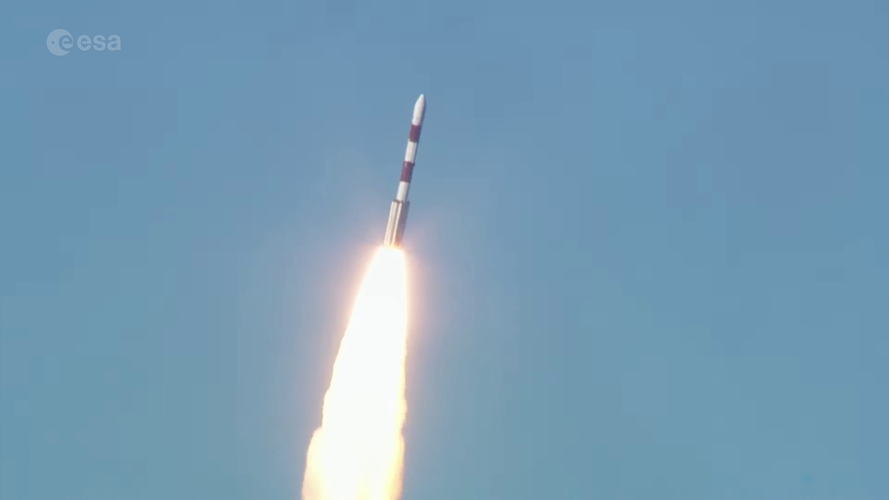 Video:
00:01:21
Video:
00:01:21
Proba-3 lifted off on its PSLV-XL rocket from Satish Dhawan Space Centre in Sriharikota, India, on Thursday, 5 December, at 11:34 CET (10:34 GMT, 16:04 local time). The mission was launched using this Indian launcher because it needed to be placed in a highly elliptical orbit extending more than 60 500 km from the ground.
After integration and testing was completed at Redwire Space in Belgium, Proba-3 was transported to India to be prepared for launch.
The latest member of ESA’s family of in-orbit demonstration missions, Proba-3 is in fact two spacecraft being launched together, which will separate in
Vega-C and Sentinel-1C launch highlights
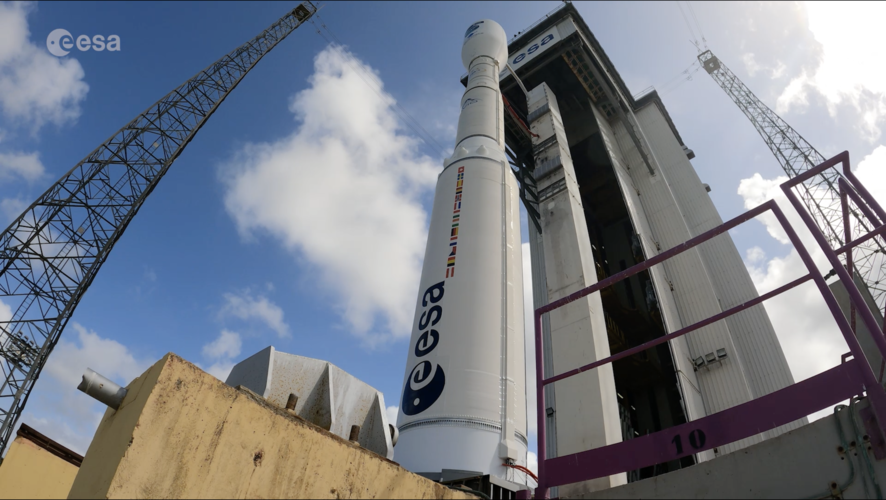 Video:
00:03:40
Video:
00:03:40
The third Copernicus Sentinel-1 satellite, Sentinel-1C, has launched aboard a Vega-C rocket, flight VV25, from Europe’s Spaceport in French Guiana. The rocket lifted off on 5 December 2024 at 22:20 CET (18:20 local time).
Sentinel-1C extends the legacy of its predecessors, delivering high-resolution radar imagery to monitor Earth’s changing environment, supporting a diverse range of applications and advance scientific research. Additionally, Sentinel-1C introduces new capabilities for detecting and monitoring maritime traffic.
The launch also marks Vega-C’s ‘return to flight’, a key step in restoring Europe’s independent access to space. Vega-C is the evolution of the Vega family of rockets and delivers increased performance, greater payload volume and improved competitiveness.
Telebras and SES bring internet access to over 1500 sites in Brazil's Northern Region
 Telebras, in partnership with SES and other collaborators, has enhanced digital connectivity in Brazil's Northern Region by deploying over 1,500 Internet access points. These sites, established through the Government Electronic Service for Citizen Assistance (GESAC) program, include public institutions, schools, libraries, telecenters, health units, indigenous villages, and rural settlements.
Telebras, in partnership with SES and other collaborators, has enhanced digital connectivity in Brazil's Northern Region by deploying over 1,500 Internet access points. These sites, established through the Government Electronic Service for Citizen Assistance (GESAC) program, include public institutions, schools, libraries, telecenters, health units, indigenous villages, and rural settlements. GPS alternative for drone navigation leverages celestial data
 In response to the rising threat of GPS jamming in drone warfare, researchers at the University of South Australia (UniSA) have pioneered a celestial navigation system that uses star-based visual data as an alternative to the global positioning system.
Combining celestial navigation with vision-based technology, UniSA's remote sensing engineers have created a lightweight, cost-effective sy
In response to the rising threat of GPS jamming in drone warfare, researchers at the University of South Australia (UniSA) have pioneered a celestial navigation system that uses star-based visual data as an alternative to the global positioning system.
Combining celestial navigation with vision-based technology, UniSA's remote sensing engineers have created a lightweight, cost-effective sy Hubble delivers unprecedented view of a quasar
 Using NASA's Hubble Space Telescope, astronomers have achieved an unprecedentedly close look into the core of a quasar - a luminous and energetic galactic nucleus powered by a supermassive black hole. This study reveals intricate structures surrounding the black hole and sheds new light on the dynamic processes fueling quasars.
According to Bin Ren of the Cote d'Azur Observatory and Univer
Using NASA's Hubble Space Telescope, astronomers have achieved an unprecedentedly close look into the core of a quasar - a luminous and energetic galactic nucleus powered by a supermassive black hole. This study reveals intricate structures surrounding the black hole and sheds new light on the dynamic processes fueling quasars.
According to Bin Ren of the Cote d'Azur Observatory and Univer Particle research gets closer to answering why we're here
 Physicists hope to answer fundamental questions about the origins of the universe by learning more about its tiniest particles.
University of Cincinnati Professor Alexandre Sousa helped outline the next 10 years of global research into the behavior of neutrinos, particles so tiny that they pass through virtually everything by the trillions every second at nearly the speed of light.
T
Physicists hope to answer fundamental questions about the origins of the universe by learning more about its tiniest particles.
University of Cincinnati Professor Alexandre Sousa helped outline the next 10 years of global research into the behavior of neutrinos, particles so tiny that they pass through virtually everything by the trillions every second at nearly the speed of light.
T 






